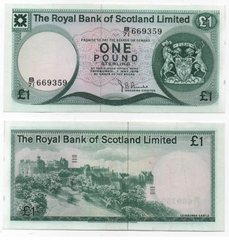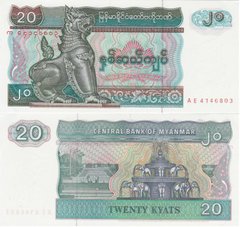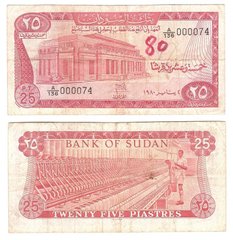|
Quantity
|
Out of stock
|
||
|
|
|||
The most beautiful banknotes in the world
There are many more varieties of money in the world than the countries themselves. At the same time, any bill can tell about its state in much more detail than it might seem to you at first glance. So, with banknotes you can study geography, with American dollars - local presidents. Every day, Ukrainians see outstanding historical figures on their currency, and euro banknotes will tell about the countries that are part of the Eurozone. More and more, paper money resembles bright, colorful, miniature works of art, because hundreds of people are working on their creation. Agree that it is much more pleasant to pay for your purchases with pretty banknotes. By the way, “beauty contests” were held among world currencies, and the result of one of these contests was highlighted by David Standish in his book “The Art of Money”.
Franc from the Pacific French Territories This bill will be in your hands thanks to a trip to the islands of the Pacific Ocean, to French Polynesia. So carefree life reigns here that it is displayed even on paper money. You will not see presidents, politicians or cultural figures on them, but only beautiful local residents with traditional wreaths, standing against the backdrop of mountains, palm trees and the endless sea.
Maldivian rupee The Republic of Maldives usually ends up at the bottom of the list when countries are listed by GDP and financial well-being. However, this did not affect her banknotes at all. Bright, attractive Maldivian rupees convey the mood of local residents who do not follow bank rates, but fish, collect coconuts, weave fabulously beautiful wreaths from local flowers. Delicate tones of banknotes depicting the sea, palm trees, sailboats, flowers will please not only the collector, but also those who simply leave a banknote in their purse as a keepsake.
Dobres from Sao Tome and Principe The name of this African country and its monetary units are hardly familiar to a wide range of collectors. The state in West Africa is located very close to the Equator, which could not but affect the local nature. Locals in their dialect call the country nothing more than "Paradise on Earth", and it is very difficult to argue with this. This attitude to nature and its wealth is reflected in the local currency of dobra: waterfalls, mountains, rivers, the sea, flora and fauna, peasants engaged in labor.
Swiss franc Switzerland is one of the few countries in Europe that has not adopted the euro, but has retained its own currency. And didn't miss a beat. The Swiss franc is not only one of the most stable currencies in the world, but also one of the most beautiful. On the front side of the banknotes, you will find portraits of famous cultural figures, and, turning it over to the back side, you will be able to get acquainted with their achievements. For example, the 100 franc note depicts the famous sculptor and artist Alberto Giacometti and one of his best creations: the sculpture “Man Walking Forward”. This sculpture, by the way, is the most expensive in the world, it was sold at Sotheby's for almost $105 million.
Frank from the Comoros But back to the states in the Indian Ocean. Apparently, a special atmosphere reigns here, as local money is transformed from means of payment into works of art. In the Comoros, banknotes depicting animals and flowers are in circulation, but they are famous not only for expressive drawings. Their main difference is in a special color scheme, it is very bright and saturated. For example, if you pick up 1000 francs, then the sea will turn blue on them against the backdrop of a blazing sunset.
New Zealand dollar Banknotes from New Zealand also appeared in the ranking of the most beautiful currencies. This country boasts both a unique nature with many endemics and a stable economy. The main heroes of the national currency here are the birds, it was they who "occupied" all the means of payment. Another interesting fact is that banknotes are not printed on paper, but on the thinnest and very durable plastic. Such a banknote can easily be washed in a typewriter and nothing will happen to it.
Hong Kong dollar Let's move from calm and even conservative New Zealand to the high-tech world, to Hong Kong. This city still impresses with the pace of its economic development, showing the world another Asian tiger. This pace of life could not but be reflected in paper money, they are filled with absolutely fantastic landscapes of the technological world of the future, in which you can recognize modern Hong Kong.
History of banknotes
Money, both metal and paper, was invented for convenience and ease of trade. The fact that paper can replace precious metals was understood in Europe more than 900 years ago.
Paper Money of the Knights Templar When the Crusades became necessary in the 12th century, the Order of the Knights Templar was established, combining the functions of military and religious control. Its branches were located in Europe and the Middle East. Those wealthy knights who went under the banners of the cross knew that their mission would last a long time. They preferred not to take heavy metal money with them, but to hand it over to the Order, in return receiving a paper receipt. Today, we would confidently call this type of payment order a traveler's check. Arriving in the city where the branch of the Knights Templar was located, the knight received in his hands an amount equivalent to that left in his hometown. The Order did not work at a loss, for its services it asked for a considerable percentage. Of course, if a knight died on a campaign, then there was no one to demand on paper, the funds were transferred to the disposal of the Templars in full. As you understand, this state of affairs quickly brought the military-religious organization to the top of the financial wealth of Medieval Europe. And money then, however, as now, meant power. And this power stretched from Constantinople to Portugal. And only Philip IV decided to put an end to the unlimited possibilities of the Order, simply by simply executing its leaders, after accusing everyone of witchcraft and connection with diabolical forces. It was then that the practical idea of using paper as money was forgotten for several centuries.
The history of European banknotes of the Renaissance Period Again, financiers turned their attention to paper 300 years ago. This was necessary due to the increasing cases of population migration, including overseas. Let's say a certain Briton Charlie bought land from his neighbor Jack and must pay for the purchase. Both funds are kept in the bank. Agree that dragging a bag of silver from one financial institution to another is impractical and difficult. So the banks issued a paper check, which indicated the amount that Charlie's account was to be given to Jack. For such services, bankers took about 10 pounds, but the silver was safe and sound. Banks did more than write checks that could be exchanged for cash. They speculated on credit and loans. If we consider the example of the same British gentlemen, then the following scheme turned out: Jack puts a thousand pounds into the account at 10% per annum. A year later, Jack is already 1100 pounds. Charlie takes a loan from the bank to buy Jack's house, but at 15%. The bank issues a loan using the funds of Jack himself, and has a 5% per year net profit from this. At the same time, financiers were already at that time executing transactions secured by real estate, so in any case they were winning if the unlucky creditor could not pay the bills. Thus, bank checks have become a convenient and common means of payment. To protect against counterfeiting, financiers used personal checkbooks, and then banknotes - paper issued by a bank, according to which their owner could receive the equivalent of a face value in silver or gold in another bank. Just 200 years ago, the governments of Western Europe followed the example of the banks and began issuing their own paper money. But already in the 19th century, the issue of banknotes became the full prerogative of the state. Only the Main (Central) Bank of any country began to have the right to issue.
Paper money and inflation Inflation is the process of depreciating money. Its peculiarity lies in the fact that the surplus of the money supply can be tracked far from immediately. For example, while Europe during the great geographical discoveries realized that its market was saturated with gold, the Portuguese and the Spaniards managed to make a lot of money. Only two things benefit from inflation: those who make money; those who are the first to put the surplus into circulation. Modern governments also use these means. They print banknotes, knowing that their purchasing power will soon decline. At first, money is given to pensioners, teachers, doctors, and other civil servants, and then their hands are divorced, "dealers with hucksters" are accused of raising prices for goods. History knows examples when banknotes by themselves were worth nothing, and they could only be used together with additional means of payment. For example, coupons - a kind of documents that give the right to purchase the specified name of goods. If, due to inflation, an excess of zeros is formed on the bills, and they make calculations difficult, the heads of state carry out a denomination - removes a few zeros. So, in Brazil in 1997, three zeros were removed. But in Italy, before the introduction of the euro, 1 dollar was worth 2,000 lire, but no one denominated there.
When did paper money appear?
Paper money was first made in China during the reign of Hin Tsung (806-811 BC). However, their circulation was not particularly widespread due to the expensive production technology and the simplicity of minting coins. Only in the 13th-14th century banknotes appear in Mongolia, Japan, Persia and China in much larger quantities. The bark of trees was taken as the basis for production, and seals, signs, images were applied to the surface of finished banknotes, by which their authenticity and purchasing power were determined. It was in China for the first time that what would later be called hyperinflation occurred against the background of the uncontrolled distribution of banknotes. The rulers of the country solved the issue radically, in the 16th century they simply banned the circulation of paper money throughout the entire state. Europe learned about paper money from the traveler and merchant Marco Polo, who visited China in 1286. He described in detail how banknotes are made and changed in the 22nd chapter of his collected works on travels in Asia, translated, including into Russian. In the United States, the first banknotes did not appear until 1690, when a local bank in Massachusetts issued credit notes in limited quantities. Paper money was accepted favorably and enjoyed success. Subsequent issues were in 1702 and 1709. However, things were not going smoothly with the first American banknotes. In 1712, due to the war with Canada, payments on bank loans were stopped, which led to a sharp drop in the solvency of banknotes. Even after being declared legal tender, they continued to depreciate. As a result, in 1750, Massachusetts was forced to return to the usual metal coins. Again, the idea of paper money returned to America only in the 1860s, during the internecine wars. At the same time, it took about 20 years to restore confidence in banknotes. All this time, they were accepted only at a forced non-exchange rate. Since 1878, they have already been a convenient addition to metal coins, settlements between banks. In the Old World, banknotes came into circulation not much earlier than America. In the early 18th century, John Law, a French businessman of Asian descent, convinced the French government to issue securities with a declared value and at the same time prohibit individuals from holding gold and silver worth a total of 500 livres or more. John Lo sincerely believed that a great future opened up behind the bills. In his letters to financiers, he wrote the following theses, confirming his correctness: Universal value. Physically light weight. Convenience of payments and exchange. Safety without loss. There is no need for coinage, and the degree of protection is higher. However, John's experience was a failure and for a long time discouraged the French from starting to issue banknotes. Only during the Bourgeois Revolution was the government compelled to take this measure. They printed a huge amount of banknotes, which instantly caused the depreciation of the local currency. Bank papers of that time eloquently testify to the low cost of banknotes: for one franc in gold, almost 313 francs were given in banknotes (1796). In order to maintain a stable exchange rate for banknotes, many governments of that time maintained a voluntary, guaranteed and unlimited exchange of paper money for silver, gold, and coins. This continued from the 18th to the beginning of the 20th century. On Russian bank notes from the time of Nicholas II, it says that "The Russian State Bank exchanges tickets for a gold coin without restriction." On a Japanese banknote from the same period, it is written that "The State Bank of Japan guarantees to pay the bearer of this ticket one yen in silver." Paper money today is an interest-free obligation of the state to its citizens. Banknotes of a certain denomination and appearance are legal tender, as are metal coins. A very important quality of banknotes is their ability to be exchanged for coins, on the basis of which there are three types of paper money: However, they do not include those banknotes that are issued by financial or credit institutions on special grounds. Unchangeable banknotes without a forced exchange rate. They are recognized as a means of payment only in settlements with the state treasury, but are rarely used for exchange among private individuals. Unchangeable banknotes with a forced exchange rate. The most insidious type of banknotes, which is introduced if hyperinflation is detected in the country and the exchange of paper banknotes for coins does not make sense because of their low purchasing power. These banknotes characterize the instability of the financial situation in the country, the crisis of power, the inability of the administration to manage the budget.
Condition of banknotes and coins
UNCIRCULATED (Unc) - An uncirculated banknote that has absolutely no signs of wear or even stickers. The paper is clean, without stains (natural blotches do not count!), colors are not changed. The corners are sharp and straight. There is not the slightest rounding, bending or hole.
ABOUT UNCIRCLATED (aUNC, AU) - An almost uncirculated banknote with some minor wear. It may have a mark from the wet hands of a bank teller, or a slight and flattenable fold in the middle or side (but not a kink!).
EXTREMELY FINE (XF or EF) - “Extremely fine” condition. Very attractive sign, with light wear. It can have no more than three light bends, transverse or longitudinal (but not intersecting!) Or one strong break. The paper is clean, the colors are not changed, there are no spots (natural blotches do not count!). Corners may have slight signs of rounding. The badge may have slight wear at the edge of the bend.
VERY FINE (VF) - “Very fine” state of preservation. Attractive sign, but with noticeable traces of circulation. It may have several longitudinal and transverse bends at the same time, but the paper is still fresh, not shabby and not “chewed”. There may be traces of small spots. The corners are slightly frayed, but there are no large roundings.
FINE (F) - “Fine” preservation. A banknote that had a long circulation, with a lot of bends, kinks and wrinkles. The paper is not very dirty, but may have stains. The edges can be very frayed, with small tears along the edge. Tears do not extend deep into the mark. There is not the slightest hole in the center due to folding. The colors are clear, but not very bright anymore.
VERY GOOD (VG) - “Very good” condition. Reused banknote, but not damaged. Corners may show visible signs of wear and rounding, as well as decals. Tears may extend into the sign, there may be discoloration, there may be a small hole in the center of the sign from over-folding. No part of the sign may be torn out. The VG banknote may still have an attractive appearance.
GOOD (G) - “Good” preservation. A heavily worn sign. Natural damage from prolonged use may include: severe repeated bending and kinking, stains, holes, edge tears, a hole in the center, rounded corners, and generally unattractive appearance. No large parts of the sign may be missing. Indelible (non-erasable) extraneous inscriptions usually “shift” even a brand new voucher into the Good category.
POOR - “Rag”. Banknote with serious damage due to wear: parts of the field are missing, there are indelible inscriptions, ink stains, holes. May have adhesive tape holding the parts of the sign together. May have glued corners. The collection is included only in case of extreme rarity.























